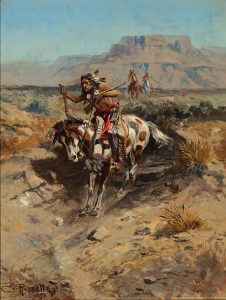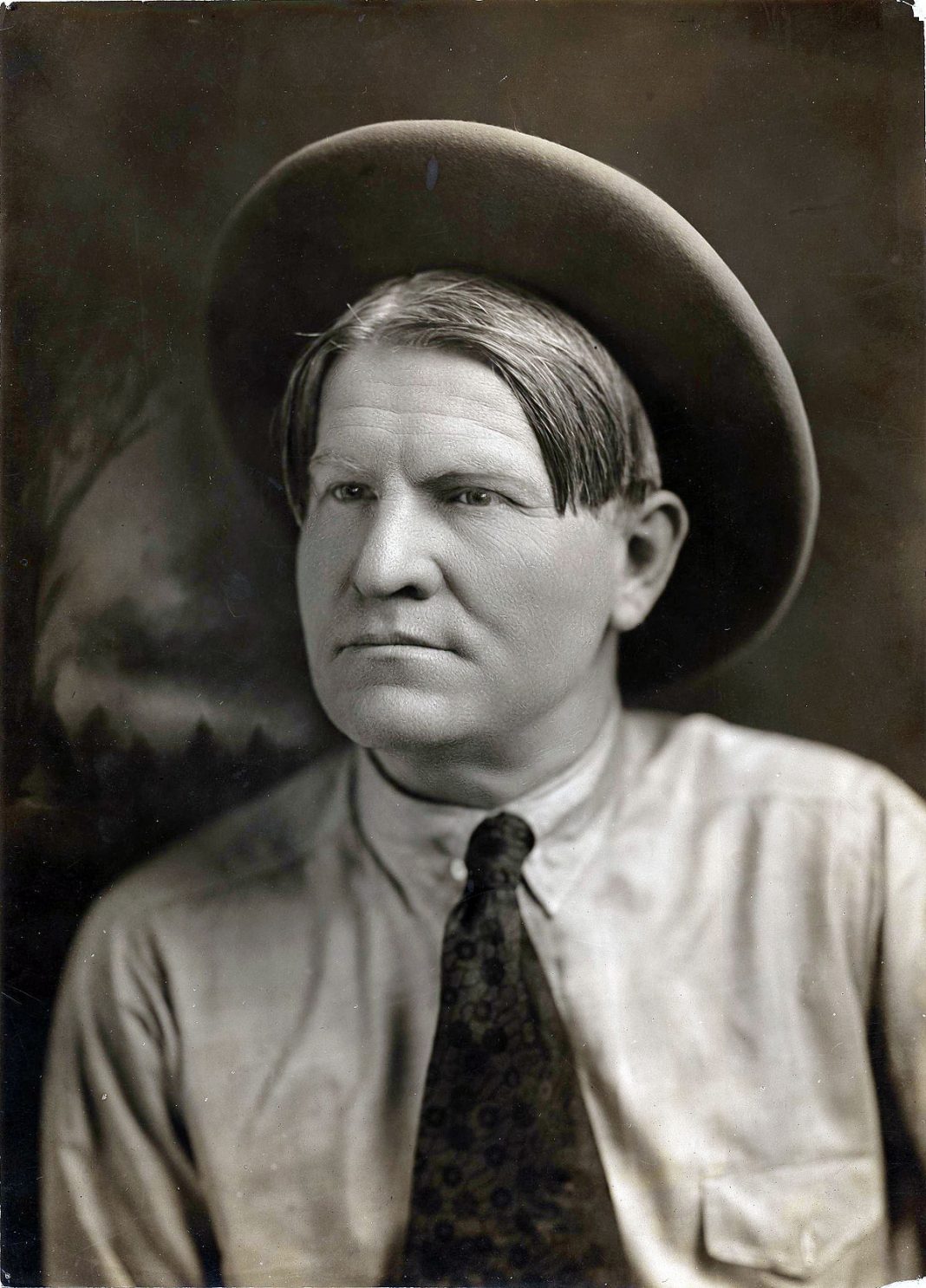Born on this day in St. Louis, Charles Marion Russell became a legendary painter and sculptor of frontier activities of the American West. Unlike his well-known counterpart, Frederic Remington, he preferred to paint the Indian and the Cowboys rather than the cavalry men.
He was fascinated with western life from an early age when he had heard stories of Indian fighting about his great uncle, Will Bent. Russell’s earliest paintings were of war bonneted Indians on horseback. Not interested in school, he left home for Helena, Montana, at the suggestion of his father, who paid his son’s way after the youth turned 16. The father thought that rough and tough realities of the West would shake romantic notions of it out of the boy’s head. But instead, Russell fell totally in love with the environment.
He got a job as a night wrangler, and had the days free for observation and painting. He spent seven years working at cowboy jobs and carried his watercolors in his bedroll and also made clay models of wildlife. He did numerous profiles paintings, and sold his early works among the cowboys for five and ten dollars each.
In 1887, he turned down a chance to study in Rome to spend the winter with the Blood Indians in Canada. He became very sensitive to the plight of Indians and respectful of their ways.
In 1888, Harper’s Weekly published one of his cowboy paintings, and he spent that winter among the Blackfeet Indians of Alberta. He studied their language and ceremonies, and the Chief tried unsuccessfully to get Russell to take an Indian wife. In 1890, a folio of fourteen of his paintings was published, and that same year, he did a mural of ranch life scenes for the iron door of the bank in Lewiston, Montana.
But it was not until fall, 1896, that he pursued art as a serious career. That year he married Nancy Cooper, and devoting her life to furthering his career, she persuaded him to set up a studio and do commissions. She became his business manager, and much of his career success is due to her marketing and business skills.
In succeeding years, his popularity as an illustrator increased, amazing success considering that he had had only three formal drawing lessons. His paintings of men and wild animals, pitted against tough life in the West, also sold widely to Hollywood celebrities, oil rich collectors, a numerous others who liked reminders of the “wild west.” In the early 1900s, Russell and his wife visited Yellowstone National Park, and he later did illustrations reflecting that visit including the book, Fifteen Thousand Miles by Stage by Carrie Strahorn. He regarded the Park as a haven for wild animals, and strongly opposed the idea of anyone killing them for hunting pleasure. Apparently Russell only visited the Park once, in 1902, but in 1915, Nancy Russell came back to the Park by herself and set up an exhibition of her husband’s work, which was well received.
He traveled frequently throughout the West, and his Arizona painting Navajo Trackers is thought to be his last completed work. He died of heart failure in Great Falls, Montana on October 24, 1926, but during the last seven years of his life, he spent his winters in Pasadena, California.
Biography courtesy of AskART.com.

“Indian On Horseback”
oil 13 3/4″ x 10 1/2″
See it First!
Receive notifications from America's online art gallery when the latest works from top artists are available.



